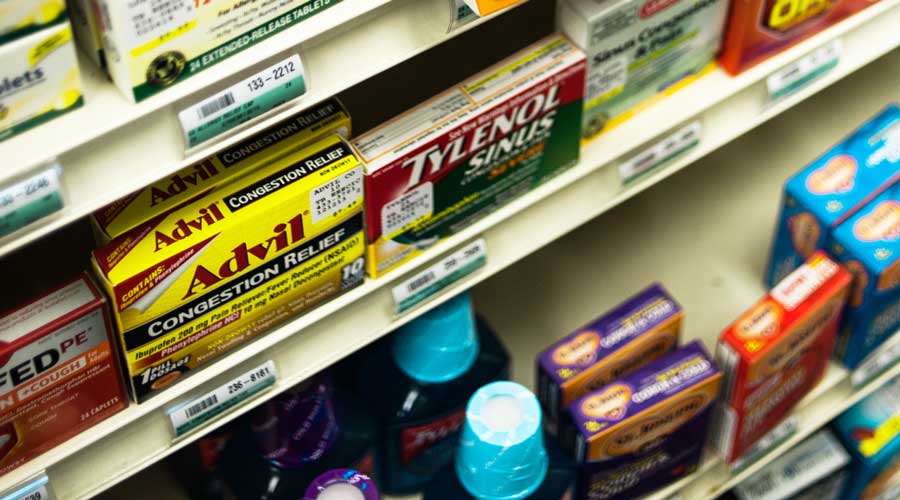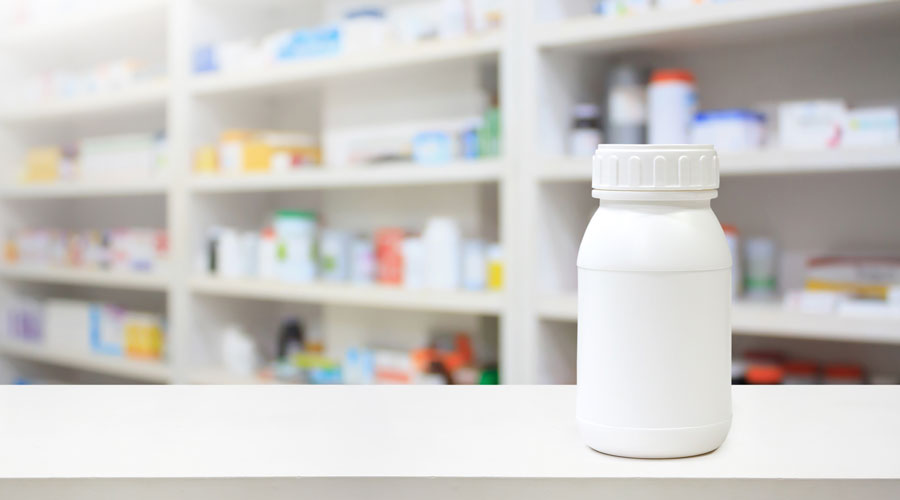Inside: Get your independent pharmacy ready for allergy season. Learn key insights to boost front-end sales of allergy products.
Are you making the most of allergy season at your independent pharmacy?
As patients start coming in sneezing and sniffling, now’s the time to get your pharmacy ready for allergy season.
Patients will turn to your pharmacy’s front end for allergy relief. Make sure your allergy category is well-stocked and ready to go.
Why the Allergy Category Isn’t a Market to Sneeze At
Cold & allergy held strong as the number one category in dollar sales in 2017 for independent pharmacies, representing 17.9 percent of health, beauty, and wellness sales, according to Hamacher Resource Group (HRG), a firm that improves results across the retail supply chain by addressing dynamic needs such as assortment planning and placement, retail execution strategy, fixture coordination, item database management, brand marketing, and analytics.
Because the category does so well, Kyle Lentz, Category Analyst at HRG, recommended pharmacies evaluate how much space they give to under-performing categories.
And he suggested pharmacies consider adding additional feet to their cold & allergy departments.
How Rx to OTC Switches Can Boost Allergy Sales
The time is right for allergy sales to skyrocket.
Recent Rx to OTC switches in the allergy category are leading to rising sales.
And the number of allergy sufferers who use OTCs has increased from 66 percent in 2009 to 75 percent in 2015. That means more patients are going to come to your pharmacy looking for self-care options to tame their seasonal allergies.
Many patients likely don’t know about new allergy products that moved to OTC, like Flonase®. Encourage your pharmacists to make time to help patients choose the right OTC allergy relief product for them.
4 Little-Known Insights for Pharmacy Owners About Allergy Season
You know the basics about allergy season. When it starts. How long it lasts. The symptoms of seasonal allergies.
And you know even more about how to help patients coming in with itchy eyes, runny noses, and coughing. What medications to recommend. How to spot the difference between allergies and a cold. The best eye drops for relief.
But do you know how patients shop? Do you know how to get top sales out of the allergy category in your pharmacy’s front end?
A survey from Field Agent, a marketing research company, asked more than 500 people across the country about their attitudes and preferences when it comes to allergies. And the survey found several important insights.
You can use this information to help your pharmacy capture more of the $1.8 billion that patients spent in allergy category sales.
Here are four key insights about allergy marketing, buying behaviors, and advertising that you should know. We also offer tips for using this information to maximize front-end sales in your pharmacy.
1. Allergy relief is a popular category
People are looking for allergy relief.
According to the survey, 86 percent of respondents reported purchasing, or planning to purchase, at least one allergy prevention or treatment product during the 2015 allergy season.
Pro Tip: Because of this category’s popularity, make allergy relief the focal point of your pharmacy’s front end. Use ends cap displays and planograms to organize all of your allergy products and treatments into one easy-to-find section.
2. Antihistamines top the category
Antihistamines earned the top spot among allergy preventions and treatments, with 63 percent of survey respondents reporting buying at least one this year.
And, antihistamines beat out decongestants, which 44 percent of respondents reported purchasing, and pain relievers, which 42 percent of respondents reported purchasing.
Pro Tip: Feature a variety of antihistamines in your pharmacy’s front end, so patients have options for allergy relief.
Help patients compare the features of different antihistamines, including:
- How long before they take effect
- How long they last
- What symptoms they alleviate
- Side effects
Do the same with decongestants and pain relievers to help patients choose a product that will best address their symptoms.
3. Usage depends on geography
Your independent pharmacy’s allergy product sales may depend on your location.
Survey respondents from the Western U.S. bought considerably fewer allergy products than the rest of the country in the top three categories:
1. Antihistamines
2. Decongestants
3. Pain relievers
While northwesterners purchased decongestants and pain relievers well above the national rate.
Pro Tip: Use your pharmacy’s geographical location to tailor your ends caps to patients’ needs.
If you’re in the Northwest of the country, consider prominently featuring decongestants. And, add pain relief to the allergy display to capitalize on this buying trend.
If you’re located in the West, you might want to feature sunscreen instead of allergy relief to make the most of your end caps.
4. Advertisements affect category purchasing
Advertising can influence sales.
Nearly a quarter of the survey’s respondents reported purchasing at least one allergy medication over another as a direct result of advertising.
Survey respondents said that the ad’s relevance to their lives made the ad effective in guiding their purchasing choice.
Pro Tip: Use signage, planograms, and displays from manufacturers. Displays can leverage this category’s effective ads to sell more allergy products.
And, branded signage can help patients make the connection between the product on the shelf and the advertisement they saw earlier.
Don’t Forget to Cross-Promote in Your Pharmacy Allergy Section
Spring allergy season can start as early as February and last through summer.
Make the most of the spring allergy season by cross-promoting other products in your top-selling allergy section. You’ll encourage impulse purchases and boost overall sales.
Cross-promotional items to add to your allergy section:
- Eye drops
- Lip balm
- Nasal cleansing pots
- Nasal strips
- Saline solutions
- Tissues
And make sure to keep your allergy section well-stocked all year. Some patients can experience a resurgence of their allergy symptoms again in the fall. And many have year-round allergies due to dust mites, pet dander, and mold.
Use this information about the allergy category to maximize your pharmacy’s sales this allergy season.
Want more pharmacy business tips and advice like this? Sign up for our e-newsletter.












